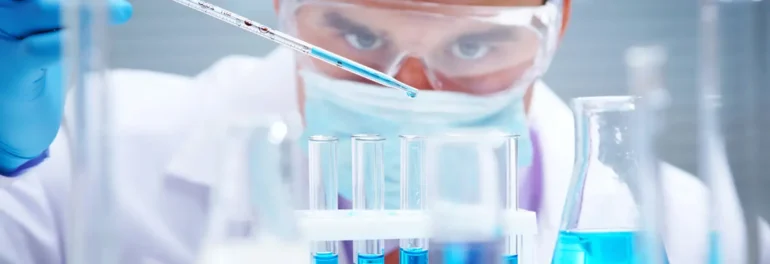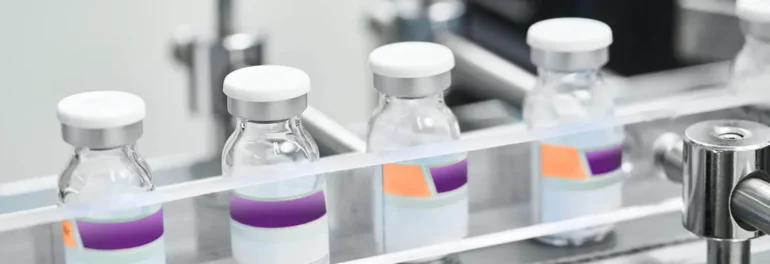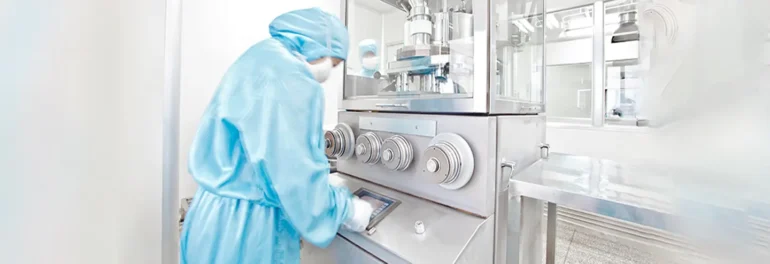Complex injectable products, including those based on liposomes, microspheres, micelles, and submicron crystals, are attractive formulation solutions for many challenging new active pharmaceutical ingredients (APIs) and for unique life cycle management strategies. Few CDMOs have the knowledge, expertise, and appropriately designed manufacturing facilities to support these highly advantageous drug delivery technologies. New Jersey–based ForDoz Pharma is changing that.
Growing Interest in Complex Products
Complex products under the Generic Drug User Fee Amendments (GDUFA II) are defined as products with complex active ingredients; complex mixtures of APIs; complex formulations, including liposomes, suspensions, emulsions and gels; complex routes of delivery, such as locally acting dermatological and inhalation drugs; complex dosage forms including long-acting injectables and implantables; and complex drug–device combinations.
Water-insoluble APIs, which make up a growing percentage of drugs in development, may be highly potent or cytotoxic, and many have solubility issues. Particle-based drug delivery systems, such as liposomes, microspheres, and micelles and submicron crystals in suspensions or emulsions, can address these issues and facilitate delivery to target sites.
The emerging technologies for complex and innovative drug delivery have wide applications in the design of sustained-release dosage forms, such as long-acting injectables, improving therapeutic index by reducing toxicity and enhancing efficacy of APIs and facilitating reformulation of existing pharmaceutical products with limited clinical utility. As a result, the demand for complex products is particularly high in drug delivery technologies for complex injectable products, due to the rapidly expanding market for biologic drugs, which are often unstable and are prone to degradation in vivo and thus require stabilization and delivery to specific target organs.
Many Types of Complex Injectable Products
Complex injectable products include liposomes, microspheres, micelles and submicron crystals in suspensions, and emulsions.
Liposomes are microscopic vesicles comprising an aqueous solution core surrounded by a hydrophobic membrane of carefully selected phospholipids. Both hydrophobic and hydrophilic small molecule and biologic (e.g., proteins, plasmids, nucleic acids) drug substances can be carried in liposomes and delivered to targeted sites of action by modifying the surfaces of the vesicles. They are also useful for sustained-release drug delivery, reducing toxicity, improving efficacy, enhancing drug solubility, and improving the activity of vaccine adjuvants.1–6
Microspheres range in size from approximately one to several hundred micrometers and consist of the active drug substance dispersed in a matrix comprising biodegradable synthetic polymers, most commonly PGLA or PLA. They can be delivered via several routes of administration, including parenterally. Microspheres are ideal for delivering drugs at a sustained and controlled rate, which can significantly improve patient compliance.7–10
A polymeric micelle, which typically exists on the nanoscale, is a supramolecular assembly of surfactant molecules dispersed in a liquid with the hydrophilic “head” regions in contact with surrounding solvent, sequestering the hydrophobic single-tail regions inside the micelle center. Unlike microspheres, they can adopt a number of different shapes, including rods, tubules and filaments, as well as vesicles and spheres. Various polyamides, polyesters, and lipids are employed for micelle generation. Micelles are typically attractive for the delivery of poorly soluble drug substances. Many water-insoluble drugs, including proteins and gene therapy drugs, can be encapsulated in the hydrophobic core during the formation of the micelle core. Many micelle pharmaceuticals demonstrate favorable stability and pharmacokinetics properties.11–14
Emulsions are thermodynamically stable isotropic systems in which two immiscible liquids are mixed to form a single phase by means of an emulsifying agent, and are suitable for the delivery of both hydrophilic and hydrophobic drugs. The droplets in the emulsion have a large degree of dispersion and a large total surface area, which can promote the absorption of drugs and improve the bioavailability.15,16
A suspension is a coarse dispersion of insoluble solid particles in a liquid medium with a particle size in the low micron range. Suspension dosage forms can incorporate significantly higher concentration of poorly water-soluble and lipid-soluble drugs.17–19 Submicron crystals in suspension also provide a method for enhancing the bioavailability of poorly soluble drugs, but do so in a carrier-free manner. The drug substance is formulated in a colloidal delivery system with a particle size ranging from 100 to 1000 nm. Compared with traditional formulations, submicron crystals in suspension can significantly improve drug solubility and prolong adhesion and the retention time of the drug in biological tissues. When injected into the muscle, submicron crystals can be slowly released over a prolonged period, reducing dosing frequency.20,21
ForDoz Pharma is a technology-based company focusing on the evelopment and commercialization of complex injectable products.
Benefits of Complex Injectable Products
Encapsulation provides greater control over the pharmacokinetic and pharmacodynamic properties of the API, leading to one or a combination of positive improvements, including reduced toxicity, increased solubility, enhanced bioavailability, and improved activity against intra- and extracellular pathogens. Additional benefits include targeted delivery, which is achieved through careful design of the liposome, microsphere, micelle, or other system. Controlled release over extended periods of time, which allows for reducing dosing frequency, is also possible with these systems.
Specialized Expertise Required for Drug Development and Manufacturing
The therapeutic efficacy of complex injectable products is directly correlated with their stability during manufacturing, storage, and delivery, as well as their ability to deliver the active drug substance to the right target. If these special particles are not produced properly, they will disassociate and not function as intended, and the drug substance may leach out into the bloodstream, potentially causing toxic side effects.
It is therefore necessary to understand the chemistry and physics of the formation processes involved for each specific type of complex injectable form and the biochemical processes contributing to their biodistribution and to be able to translate that knowledge into formulations that are manufacturable and scalable.
Specialized equipment and manufacturing systems are required to ensure that complex injectable products are produced with the desired properties. Careful selection and pre-processing of raw materials can reduce the likelihood of physical and chemical degradation. For particulate forms that are difficult to maintain in suspension, lyophilization (freeze-drying) is often used to extend shelf stability.
Sterilization for some complex injectables, notably liposomes, can also be challenging, due to the sensitive nature of the components with respect to exposure to high temperatures and radiation. Typical sterile filtration methods may also not be applicable for complex injectables based on larger particles. For some products, the entire production process must be performed under aseptic conditions.
It is also essential to develop production processes that provide high encapsulation efficiencies for liposomes and micelles, uniform distribution of APIs for microspheres, and the appropriate crystalline form for submicron crystals.
Production of liposomes, microspheres, and submicron crystals involves very high-energy processes to ensure that the right particle sizes are obtained. High entrapment efficiency must also be achieved. Off-the-shelf equipment is generally not suitable; specially designed, purpose-built systems combined with deep knowledge of processing parameters are needed to ensure that processes are established that consistently and reproducibly generate particles of the correct size. For microspheres, it is also important to remove the organic solvent used to solubilize the starting polymers without impacting the particle integrity.
Characterization of these different particle types is also challenging and requires specialized analytical technologies. It is also necessary to conduct in vivo studies to understand how these particles behave in the body.
Specialized Particle Technology Platform at ForDoz Pharma
ForDoz Pharma is a technology-based company focusing on the development and commercialization of complex injectable products. Our proprietary particle-based drug delivery technology platforms enable us to develop and manufacture innovative and superior complex products with particle sizes ranging from 10 nm to several hundred µm that improve patient care. These technologies include, micelles (~10–30 nm), liposomes (~100 nm), nanoemulsions (~200 nm), submicron crystals in suspension (~100–1000 nm), micron suspensions (~1000–3000 nm) and microspheres (~100 µm).
New State-of-the-Art Facility
In 2016, ForDoz Pharma acquired LaviPharm’s campus in East Windsor, New Jersey. At this 27-acre property, we established our own R&D labs and cGMP analytical labs. From 2017 to 2019, we successfully constructed, validated and qualified a complex product manufacturing facility that complies with U.S. cGMP standards. Overall, we have invested significant funds in this new, state-of-the-art, purpose-built facility.
The plant includes two unique, specially designed suites dedicated to liposome processing, one of which can handle cytotoxic APIs. The third process suite is reserved for microspheres, designed to operate at up to the 1000-L scale (1000 kg output).
Our filling line for liquids can process up to 100 vials per minute for vial sizes ranging from 2 to 100 mL. The completely automated line is installed within an isolator to minimize the risk of contamination. No direct human contact occurs from vial loading, vial washing and depyrogenation, filling, stoppering, and crimping; any manual interventions take place using a glove box. In the future, we will be adding a second filling line for powders and pre-filled syringes.
At ForDoz Pharma, we also have the capability for lyophilization, with two large-scale (10 m2) lyophilizers. Vial loading, washing and depyrogenation, filling, loading, and unloading of the two units is fully automated and is performed inside the isolator.
Extensive Generics Pipeline of Complex Injectables
ForDoz Pharma has established a diversified product pipeline of investigational drug products to benefit patients and ensure continuous growth of our company. We are actively pursuing additional growth opportunities for our pipeline through a combination of internal development and external licensing.
Our proprietary technologies include NanolipoDoz™ Technology, a phospholipid-based nanotechnology designed to improve therapeutic index and enhance solubility, and NanopolyDoz Technology™, a polymer-based nanotechnology in which APIs are encapsulated in polymeric matrices to control drug delivery rates and enhance drug stability.
These technologies are being used to develop generic versions of the complex existing injectable drug products. In all but one case, the drug is produced only by the innovator. By offering a generic alternative in the future, we are reducing supply chain risk and providing a more cost-effective option for important medicines. Currently, we have four products in our pipeline for which we are ready to produce FDA submission batches for the clinical trial bioequivalence stage, including anticancer and antifungal agents and a treatment for schizophrenia and emesis. The first two approvals are expected in 2022–2023, with additional approvals expected in 2024–2025.
We also have seven additional products in different stages of development in our pipeline: three are microsphere injectable products, which are used for treatment of pain, Alzheimer’s disease, and infertility; one micellar anticoagulant product; and one submicron suspension anti-inflammatory product. Patents for the five products have been filed, and regulatory submission will be filed via the 505(b)(2) route. Further, we are currently developing processes for two ANDA products based on submicron crystal technology.
Now Offering CDMO Services
We have always provided contract services for partners with whom we have had long-standing relationships. With our facility in place and our pipeline of late- and early-stage candidates well established, we are in a position to begin offering CDMO services to the pharma community at large.
ForDoz Pharma is looking to evolve by offering our platform liposome, microsphere, micelle, and submicron suspension technologies to customers seeking differentiating drug delivery technologies for their NCEs. We hope to work with customers that have candidates at the IND phase or that are in early-phase clinical development and can benefit from improved drug delivery solutions.
As projects scale, we have room to expand our production capacity and are willing to invest to meet growing demand. We are also happy to sign a no-compete agreement for all our CDMO clients; ForDoz has no interest in developing similar products that would be direct competitors of our customers’ products. We are, however, committed to partnering with pharmaceutical companies in the fight against serious illness with improved formulations.
References
Gigliobianco, M. R., Casadidio, C., Censi, R. & Di Martino, P. “Nanocrystals of Poorly Soluble Drugs: Drug Bioavailability and Physicochemical Stability.” Pharmaceutics 10, (2018).
Yang, T. et al. “Enhanced solubility and stability of PEGylated liposomal paclitaxel: In vitro and in vivo evaluation.” International Journal of Pharmaceutics 338, 317–326 (2007).
Mohammed, A. R., Weston, N., Coombes, A. G. A., Fitzgerald, M. & Perrie, Y.“Liposome formulation of poorly water soluble drugs: optimisation of drug loading and ESEM analysis of stability.“ International Journal of Pharmaceutics 285, 23–34 (2004).
Khadke, S., Stone, P., Rozhin, A., Kroonen, J. & Perrie, Y. “Point of use production of liposomal solubilised products.“ International Journal of Pharmaceutics 537, 1–8 (2018).
Yadav, D., Sandeep, K., Pandey, D. & Dutta, R. K. “Liposomes for Drug Delivery.“ Journal of Biotechnology & Biomaterials 07, (2017).
Sercombe, L. et al. “Advances and Challenges of Liposome Assisted Drug Delivery.“ Front Pharmacol 6, (2015).
Allen, T. M., Hansen, C. B. & de Menezes, D. E. L. “Pharmacokinetics of long-circulating liposomes.“ Advanced Drug Delivery Reviews 16, 267–284 (1995).
Kim, K. K. & Pack, D. W. “Microspheres for Drug Delivery.“ BioMEMS and Biomedical Nanotechnology 19–50 (Springer, Boston, MA, 2006). doi:10.1007/978-0-387-25842-3_2.
“Sustained-release microspheres of amifostine for improved radio-protection, patient compliance, and reduced side effects:“ Drug Delivery: Vol 23, No 9. https://www.tandfonline.com/doi/full/10.1080/10717544.2016.1223222.
K.H, R. “Microspheres: as carrieres used for novel drug delivery system.“ IOSR Journal of Pharmacy (IOSRPHR) 2, 44–48 (2012).
Varde, N. K. & Pack, D. W. “Microspheres for controlled release drug delivery.“ Expert Opinion on Biological Therapy 4, 35–51 (2004).
Ahmad, Z., Shah, A., Siddiq, M. & Kraatz, H.-B. “Polymeric micelles as drug delivery vehicles.“ RSC Adv. 4, 17028–17038 (2014).
Kedar, U., Phutane, P., Shidhaye, S. & Kadam, V. “Advances in polymeric micelles for drug delivery and tumor targeting.“ Nanomedicine: Nanotechnology, Biology and Medicine 6, 714–729 (2010).
Ke, X. et al. “Role of non-covalent and covalent interactions in cargo loading capacity and stability of polymeric micelles.“ Journal of Controlled Release 193, 9–26 (2014).
Xu, W., Ling, P. & Zhang, T. “Polymeric Micelles, a Promising Drug Delivery System to Enhance Bioavailability of Poorly Water-Soluble Drugs.“ J Drug Deliv 2013, (2013).
Jaiswal, M., Dudhe, R. & Sharma, P. K. “Nanoemulsion: an advanced mode of drug delivery system.“ 3 Biotech 5, 123–127 (2015).
Wadhwa, J., Nair, A. & Kumria, R. “Emulsion forming drug delivery system for lipophilic drugs.“ Acta Pol Pharm 69, 179–191 (2012).
Chen, A. et al. “Dosage Form Developments of Nanosuspension Drug Delivery System for Oral Administration Route.“ Curr. Pharm. Des. 21, 4355–4365 (2015).
Patel, V. R. & Agrawal, Y. K. “Nanosuspension: An approach to enhance solubility of drugs.” J Adv Pharm Technol Res 2, 81–87 (2011).
Yadollahi, R., Vasilev, K. & Simovic, S. “Nanosuspension Technologies for Delivery of Poorly Soluble Drugs.” Journal of Nanomaterials https://www.hindawi.com/journals/jnm/2015/216375/ (2015) doi:10.1155/2015/216375.
Gao, L. et al. “Application of Drug Nanocrystal Technologies on Oral Drug Delivery of Poorly Soluble Drugs.” Pharm Res 30, 307–324 (2013).
Originally published on PharmasAlmanac.com on March 19, 2020






